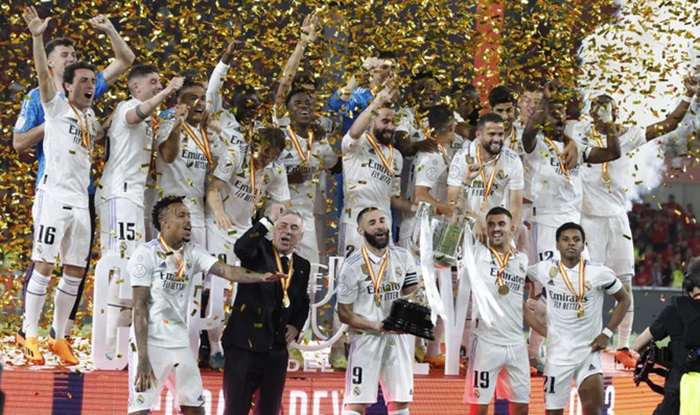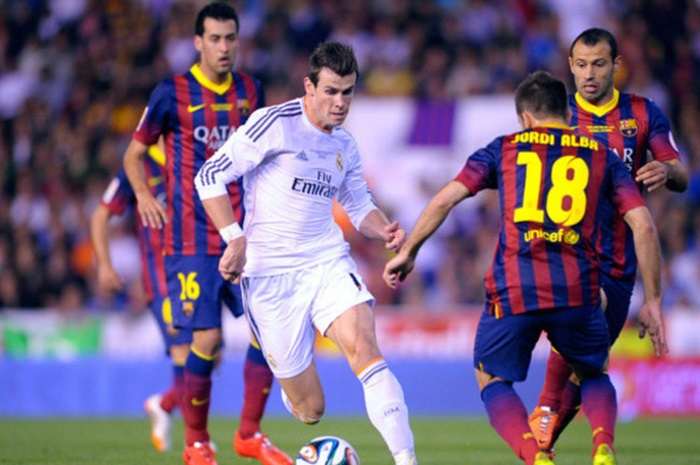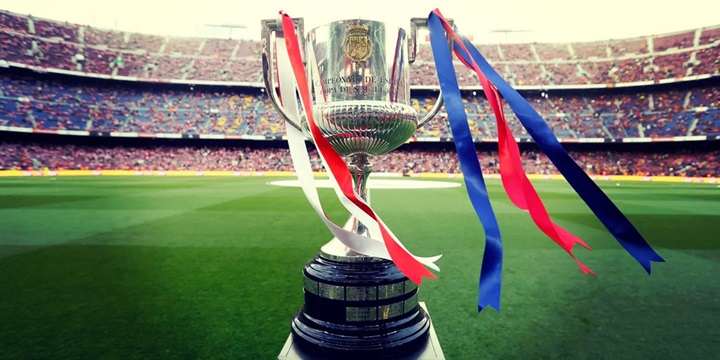The Copa del Rey, or King’s Cup, is one of the most prestigious football tournaments in Spain. It is not only a celebration of skill and rivalry but also a significant part of Spanish football history. From its humble beginnings to the modern era, the competition has produced some of the most memorable matches in Spanish football. This article delves into the history, significance, format, and iconic moments of Copa del Rey games.
A Brief History of the Copa del Rey

The Copa del Rey was established in 1903, making it one of the oldest football competitions in the world. It was created to celebrate the crowning of King Alfonso XIII, and thus, it became known as the King’s Cup. The tournament was designed as a knockout competition that would bring together teams from all levels of Spanish football.
Initially, the competition was open only to a few regional champions. Over time, however, it grew to include more clubs, eventually becoming a national tournament. The Royal Spanish Football Federation (RFEF), the governing body of football in Spain, now organizes the competition.
The Evolution of the Format
The format of the Copa del Rey has evolved throughout its history. At its core, it remains a knockout competition, but adjustments have been made over the years to accommodate more teams and ensure fairness. Today, teams from La Liga, Segunda División, and lower divisions participate, as well as regional amateur clubs. The tournament includes both single-leg and two-leg matches, culminating in a dramatic final held at a neutral venue.
The “Giant-Killing” Nature of the Tournament
One of the most exciting aspects of the Copa del Rey is its unpredictability. Lower-tier teams have the opportunity to face the giants of Spanish football, and history has seen many “giant-killing” moments where small clubs defeat the favorites. These upsets capture the imagination of fans and reinforce the tournament’s magic.
The Prestige of the Trophy
Winning the Copa del Rey is not just about lifting the trophy; it’s about glory, tradition, and legacy. It is one of the few opportunities for smaller clubs to make their mark on the national stage, while for the big clubs like Real Madrid and Barcelona, it’s another chance to add silverware to their illustrious histories.
The Structure and Stages of the Copa del Rey
First Round: The Underdogs’ Stage
The Copa del Rey begins with the first round, where teams from the lower divisions compete for the chance to advance and face the more established clubs. This is the stage where amateur clubs and smaller professional teams get their chance to shine. These matches often take place in small, intimate stadiums, giving the games a unique atmosphere.
For many clubs, the first round is the most important match of their season. The financial rewards of progressing further in the tournament can be significant, and the possibility of facing a top-tier team adds a sense of excitement and drama.
Round of 32: The Big Boys Enter
The Round of 32 is where the real magic of the Copa del Rey begins. This is the stage where La Liga teams enter the competition, and the possibility of David vs. Goliath matchups becomes a reality. Lower-league teams dream of drawing Real Madrid, Barcelona, or Atlético Madrid, knowing that a victory could be the highlight of their history.
At this point, the games are typically single-leg affairs, which means one slip-up can see a big club eliminated. The excitement is palpable, and fans from across the country tune in to see if an upset is in the making.
Quarterfinals and Semifinals: The Road to Glory
As the competition progresses to the quarterfinals and semifinals, the matches become more intense and dramatic. By this stage, most of the underdogs have been eliminated, and the remaining teams are usually the elite of Spanish football. However, surprises still happen, and the Copa del Rey has a long history of lower-league teams making deep runs.
The semifinals are played over two legs, adding an extra layer of strategy and intrigue. Teams must balance attack and defense, knowing that one mistake could cost them a place in the final.
The Copa del Rey Final: A Grand Spectacle
The Copa del Rey final is one of the most anticipated events in the Spanish football calendar. Played at a neutral venue, usually the Estadio de La Cartuja in Seville or the Wanda Metropolitano in Madrid, the final attracts thousands of fans and millions of television viewers from around the world. The atmosphere is electric, and the stakes are incredibly high.
For the two teams that make it to the final, it’s not just about winning a trophy; it’s about creating history. The Copa del Rey final has produced some of the most iconic moments in Spanish football, and for many players, lifting the cup is a career-defining achievement.
Iconic Moments in Copa del Rey History
The “Maracanazo” of Athletic Bilbao (1984)
One of the most memorable moments in Copa del Rey history took place in the 1984 final between Athletic Bilbao and Barcelona. Played in Madrid at the Santiago Bernabéu, the match is remembered not just for Athletic’s 1-0 victory but also for the chaos that ensued after the final whistle.
A mass brawl broke out between the players, including Diego Maradona, who was playing for Barcelona at the time. The incident remains one of the most infamous in Spanish football, but for Athletic Bilbao, the victory was sweet as it secured their 23rd Copa del Rey title.
Real Madrid’s Dramatic Victory in 2014
In recent years, one of the most iconic Copa del Rey games occurred in the 2014 final between Real Madrid and Barcelona. With the game tied at 1-1 and heading towards extra time, Gareth Bale scored a stunning solo goal, sprinting from the halfway line to slot the ball past the goalkeeper.
The goal is now part of Copa del Rey folklore and secured Real Madrid’s 19th Copa del Rey title. Bale’s incredible pace and composure under pressure made the moment even more memorable for Madrid fans.
Mirandés’ Cinderella Run (2012)
In 2012, CD Mirandés, a team from the third tier of Spanish football, captured the hearts of fans across the country with their Cinderella run to the semifinals of the Copa del Rey. Mirandés defeated several top-tier teams, including Villarreal and Espanyol, to reach the semifinals, where they ultimately lost to Athletic Bilbao.
While they didn’t make it to the final, their giant-killing run remains one of the most remarkable stories in Copa del Rey history. Mirandés showed that in the Copa del Rey, anything is possible.
The Copa del Rey in Modern Football

TV Coverage and Global Reach
In recent years, the Copa del Rey has gained even more prominence thanks to increased television coverage and global broadcasting. Major sports networks around the world now air Copa del Rey games, giving international fans a chance to witness the drama and excitement of the competition.
The growth of digital platforms has also allowed fans to stream matches online, expanding the tournament’s reach beyond Spain. This global audience has helped elevate the profile of the Copa del Rey, making it a must-watch event for football enthusiasts.
The Role of VAR in Copa del Rey
Like many major football competitions, the Copa del Rey has introduced Video Assistant Referee (VAR) technology to help officials make more accurate decisions. While VAR has its critics, it has helped reduce controversial decisions and ensure fairness in crucial moments of the competition.
The introduction of VAR has added another layer of strategy for teams, as coaches and players must be aware of the potential for goals to be disallowed or penalties to be awarded upon review.
The Future of the Copa del Rey
As Spanish football continues to evolve, the Copa del Rey remains an integral part of the country’s sporting culture. With its rich history, unpredictable nature, and capacity for producing unforgettable moments, the tournament will continue to captivate fans for generations to come.
More Clubs, More Drama
One potential future change could involve expanding the competition even further to include more clubs from Spain’s lower divisions. This would not only give more teams a shot at glory but also increase the likelihood of upset victories, adding even more drama to the tournament.
A Global Showcase
The Copa del Rey is also likely to become an even bigger global showcase for Spanish football. As interest in the competition grows internationally, there may be opportunities for the final to be played outside of Spain, similar to the Spanish Super Cup, which has been held in countries like Saudi Arabia.
Related Post:
Big Brother Reindeer Games: A Winter Wonderland of Competition
2 Player Games Unblocked: The Ultimate Guide to Fun and Friendly Competition
OVO Cool Math Games: A Complete Guide to Mastering the Game
The Copa del Rey is more than just a football tournament; it’s a celebration of the sport’s rich history, its underdog spirit, and its ability to unite fans from all walks of life. From the early rounds where minnows dream of giant-killing victories to the grand spectacle of the final, Copa del Rey games are filled with passion, drama, and unforgettable moments. Whether you’re a fan of one of Spain’s biggest clubs or a supporter of a smaller team hoping to make history, the Copa del Rey has something for everyone.


